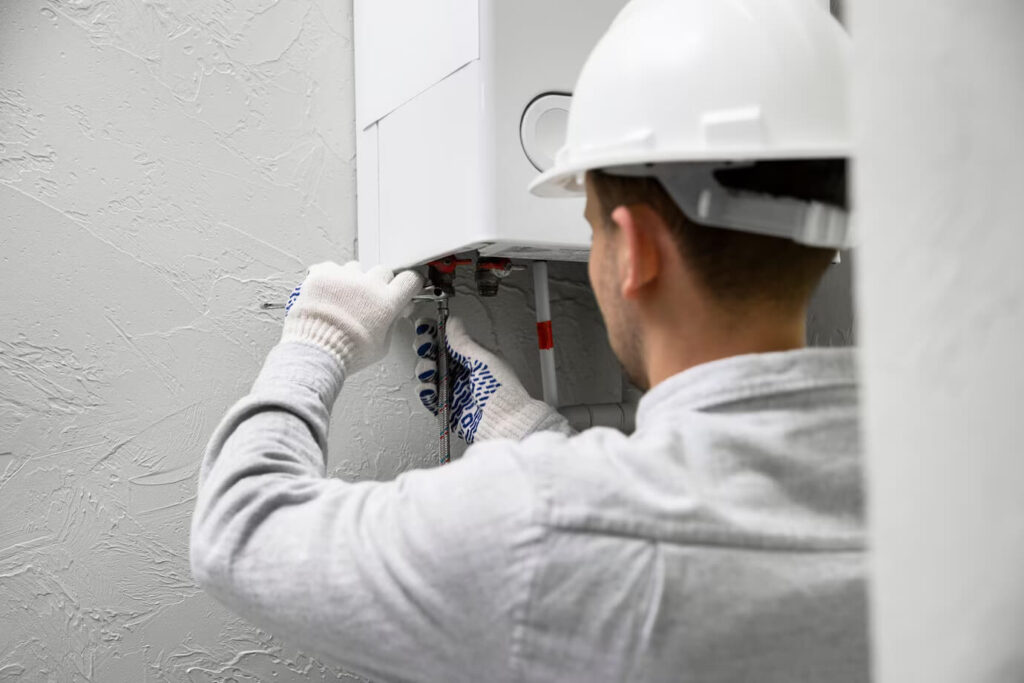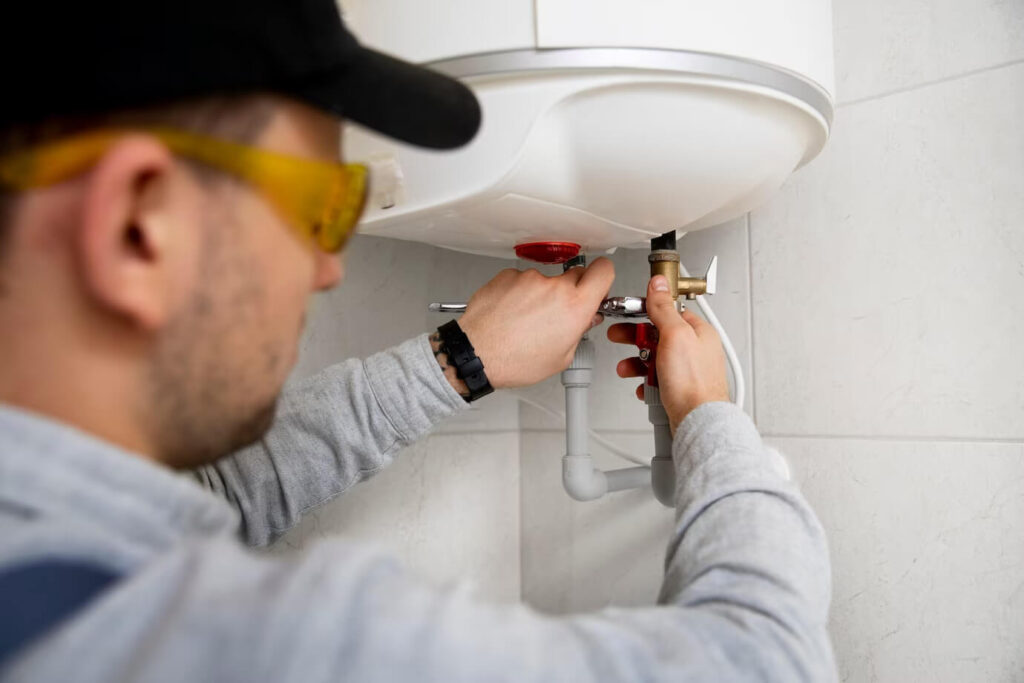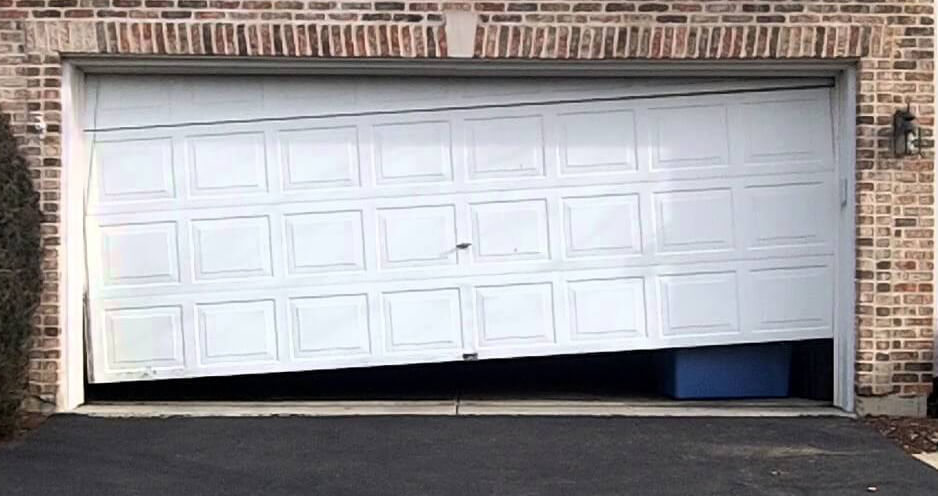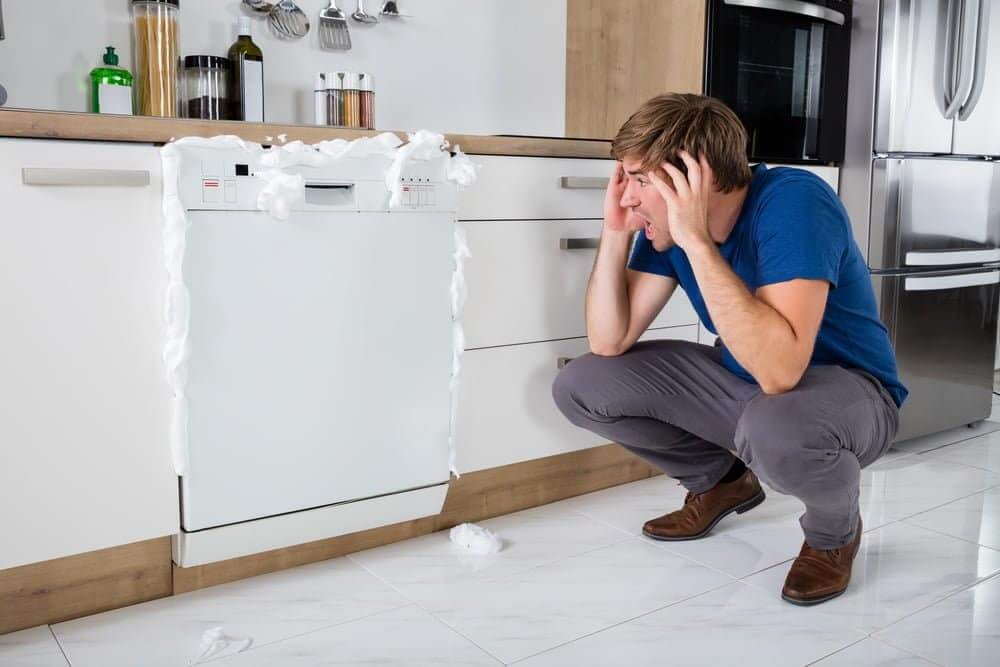
Hey there, folks! Ever had that dreaded moment when you turn on the tap, expecting a blissful stream of hot water, and all you get is an icy surprise? Well, you’re not alone. Welcome to the world of Water Heater Woes, a place where Murphy’s Law seems to have taken up permanent residence. But fear not, because we’re diving deep into troubleshooting and repair, ensuring your water heater nightmares become a thing of the past.
The Necessity of Hot Water in Our Lives
Hot water – it’s the unsung hero of our daily grind, the MVP of morning showers, the maestro behind spotless dishes. Imagine stumbling out of bed in Brooklyn, New York, on a frosty winter morning, only to find your hot water playing hooky. Ain’t nobody got time for that, right? That’s why understanding your water heater, the unsung workhorse tucked away in a corner of your home, becomes crucial.
The Perils of Water Heater Gremlins
Now, let’s talk trouble. Water heaters, like any mechanical wizardry, aren’t immune to glitches. They can throw tantrums, rebel against the cold, or simply decide to take a siesta when you least expect it. From mysterious leaks to water so hot it could double as a Jacuzzi, these heaters have a knack for keeping us on our toes.
Why Troubleshoot and Repair?
“Why bother?” you might ask. Well, think about the alternative – ice-cold showers reminiscent of polar plunges. No one signs up for that willingly. Troubleshooting and repair, my friends, are the knights in shining armor, ready to rescue you from the clutches of frigid misery.
So, buckle up! We’re about to embark on a journey through the inner workings of water heaters, unraveling their mysteries and equipping you with the skills to tackle those pesky problems head-on. Stay tuned as we navigate the maze of Water Heater Woes, right here in Brooklyn, New York, where hot water is not just a luxury; it’s a survival skill.
Understanding the Basics
Types of Water Heaters
Let’s kick things off by deciphering the water heater universe. There are two main contenders in this heated battle:
| Type | Description |
| Tankless Water Heaters | Small, wall-mounted dynamos that heat water on demand. Say goodbye to storing gallons of hot water. |
| Storage Tank Water Heaters | The more traditional folks with a reservoir of hot water ready to roll. It’s like a cozy water nest waiting for your needs. |
Components of a Water Heater
Now, let’s dissect these contraptions. Inside that seemingly unassuming metal cylinder, a world of components awaits:
- Heating Element: The unsung hero that turns electricity or gas into the warm magic that graces your shower.
- Thermostat: The maestro behind temperature control, ensuring your water isn’t playing games – not too hot, not too cold.
- Pressure Relief Valve: This superhero prevents your water heater from turning into a steam engine by releasing excess pressure.
- Anode Rod: The sacrificial lamb, rust’s worst enemy, protecting your tank from corrosion.
Feeling overwhelmed yet? Don’t worry; we’ll unravel the intricacies step by step.
Safety Precautions
The Safety Tango
Before we dive into the nitty-gritty of fixing things, let’s talk safety. Dealing with water heaters can be a tad risky, so let’s cover the safety basics:
- Shutting off Power and Water Supply: Before poking around your water heater’s innards, make sure it’s on a power break. No shocking surprises, please.
- Ventilation and Gas Safety: If your water heater dances with gas, ensure the area is well-ventilated. We don’t want any unexpected pyrotechnics.
- Protective Gear and Tools: Grab your toolbox and don safety gear – gloves, goggles – the whole shebang. We’re not taking chances here.
Armed with this knowledge and a dash of caution, you’re ready to embark on your water heater escapade. Stay tuned for the unraveling of common water heater conundrums in the next segment.
Common Water Heater Issues
No Hot Water – The Ice Bucket Challenge:
- Check for Power Supply Issues: Let’s start with the basics. Is your water heater plugged in? Tripped circuit breakers or blown fuses might be playing hide and seek.
- Inspect the Heating Element: A faulty or burned-out heating element could be the culprit. Time to swap it out for a shiny new one.
- Examine the Thermostat Settings: Maybe your thermostat is playing mind games. Ensure it’s set to a temperature that won’t turn your shower into a sauna or an ice rink.
Insufficient Hot Water – The Lukewarm Letdown:
- Evaluate Thermostat and Temperature Settings: Once again, let’s give that thermostat a side-eye. Adjust the temperature settings to meet your hot water expectations.
- Flush the Tank: Sediment buildup is the sneaky thief stealing your hot water joy. A good tank flush can evict the unwanted guests.
Water Is Too Hot – The Hot Tub Surprise:
- Adjust Thermostat Settings: If your water thinks it’s auditioning for a spa role, tone it down. Dial back the thermostat settings to a cozier level.
- Inspect and Replace a Faulty Thermostat: A rogue thermostat might be on a power trip. Swap it out for a more cooperative one.
Leaks Around the Water Heater – The Drip Drama:
- Check Pressure Relief Valve and Drain Valve: These valves can develop leaks. Tighten them up or replace if they’ve decided to retire early.
- Inspect the Tank for Corrosion and Cracks: Tanks, like fine wine, don’t age well. Check for corrosion or cracks and patch them up if possible.
- Tighten Loose Connections: Sometimes, it’s just a loose screw – or connection. A little tightening can go a long way.
Strange Noises – The Boiler Room Symphony:
- Flush the Tank to Remove Sediment: Sediment isn’t just a hot water thief; it’s also a noisy neighbor. Give your tank a good flush to restore peace.
- Inspect and Replace a Noisy Heating Element: If your heating element is turning into a rockstar, it’s time to swap it out for a more Zen replacement.
Rusty or Discolored Water – The Rusty Rainfall:
- Check for Rust in the Tank: Rust is the arch-nemesis of water heaters. If you spot it, it’s time for a tank check and possibly a replacement.
- Inspect and Replace the Anode Rod: The sacrificial rod can only sacrifice so much. If it’s worn out, your tank is in for a rusty surprise.
These troubleshooting steps are your tickets to a hot water haven. Dive into the DIY repairs in the next section, and let’s get those water heaters back in top form!
Step-by-Step Troubleshooting
A Systematic Approach
Ever feel like you’re facing a water heater puzzle with missing pieces? Fear not, fellow troubleshooter. We’re breaking down the detective work into a step-by-step guide:
- Power Play: Check the power source first. Is it plugged in? Any tripped breakers or blown fuses? Without power, your water heater is just a metal box with a pipe identity crisis.
- Thermostat Tango: Adjust that thermostat. Is it set to a temperature that won’t scald you or leave you shivering? Finding that sweet spot can make all the difference.
- Flushing Fiesta: Sediment buildup is a silent saboteur. Time for a tank flush. Draining the tank and evicting the sediment can revive your water heater’s efficiency.
- Valve Verification: Leaky valves can dampen your water heater spirit. Inspect the pressure relief valve and drain valve. Tighten or replace as needed.
- Element Examination: The heating element is the heart of your heater. If it’s misbehaving, replace it. No room for divas in the water heater world.
- Tank Integrity Check: A rusty, cracked tank is a recipe for disaster. Inspect for corrosion and leaks. Patch up what you can or consider a tank upgrade.
DIY Repairs

Tools and Materials for the Water Heater Handyman
Before we get our hands dirty, let’s gather the arsenal:
- Adjustable Wrench: The trusty sidekick for tightening loose nuts and bolts.
- Screwdriver Set: Because screws love playing hide and seek.
- Multimeter: To channel your inner electrician and check for continuity.
- Pipe Wrench: For some serious tightening action.
- Hose and Bucket: Essential for the tank-flushing ritual.
- New Heating Element and Thermostat: The stars of the show, ready to replace their underperforming counterparts.
- Teflon Tape: The unsung hero in sealing threaded connections.
With these tools at your disposal, you’re equipped to tackle the most common water heater glitches. Let’s jump into the repairs and bid adieu to those water heater gremlins!
When to Seek Professional Help
DIY Warrior or Professional Paladin?
While conquering water heater woes can be empowering, there comes a time when even the most seasoned DIY warrior needs to call in the cavalry. Here’s when it’s wise to raise the white flag and dial up the professionals:
- Electrical Enigma: If your water heater’s electrical components are giving you a migraine, it’s time to surrender. Handling wires and circuits isn’t for the faint of heart.
- Gas Gobbledygook: Gas-powered heaters are a different beast. If the odor of gas permeates the air or the flame dances in mysterious ways, leave it to the experts. Gas leaks are no joke.
- Mysterious Leaks Persist: You tightened every nut, bolt, and valve, yet the drips persist. It might be time for a pro to assess the situation and plug the leaks for good.
- Tank Troubles: If your tank resembles a rusty colander or is making unsettling noises even after flushing, a professional inspection is in order. Tanks are their territory.
- No Hot Water Resurrection: Despite your best efforts, the icy reign continues. When all else fails, a professional can perform a thorough diagnosis and prescribe the right remedy.
Hiring a Certified Plumber or Technician
Now, don’t just call any Joe with a wrench. Seek out a certified plumber or technician with the following credentials:
- License: Ensure they’re licensed to dance with water heaters in your area.
- Experience: The more battles they’ve fought, the better. A seasoned pro knows the ins and outs of water heaters.
- References: A good track record is your best assurance. Check reviews and ask for references before handing over the reins.
Remember, there’s no shame in waving the white flag. Water heaters can be tricky beasts, and sometimes, a professional touch is the secret sauce to hot water nirvana.
Maintenance Tips for Longevity
Preventive Medicine for Water Heaters
Now that your water heater is back in action, let’s talk preventive medicine. Here are some maintenance tips to keep it humming like a contented kettle:
- Regular Tank Flush: Schedule a tank flush at least once a year to bid farewell to sediment and scale buildup. Your water heater will thank you.
- Anode Rod Checkup: Every 2-3 years, inspect and replace the sacrificial anode rod. It’s the hero protecting your tank from rust invasion.
- Connection Patrol: Keep an eye on those connections. Tighten any loose bolts or nuts to prevent leaks.
- Temperature TLC: Set your thermostat at a moderate temperature – around 120°F (48°C). It’s hot enough for comfort, and not scald-your-skin-off hot.
- Corrosion Vigilance: Regularly inspect the tank for signs of corrosion. If you spot rust, address it promptly before it turns into a rusty rebellion.
By following these maintenance tips, you’re not just prolonging the life of your water heater; you’re ensuring a steady supply of warm, welcoming showers for years to come.
Final Words
In the grand saga of Water Heater Woes, troubleshooting and repair are the unsung heroes. Armed with knowledge, tools, and a dash of DIY spirit, you can navigate the twists and turns, emerging victorious in the battle against cold showers and leaks. Whether you’re a hands-on DIY enthusiast or prefer to summon the professionals, the key is staying proactive.
So, there you have it – the ultimate guide to conquering water heater conundrums, from understanding the basics to wielding the tools of the trade. Now, go forth and bask in the warmth of victory, leaving those water heater gremlins in the dust. May your showers be hot and your repairs hassle-free!
Frequently Asked Questions (FAQ)
Q1: Why is my water heater not producing hot water?
A: Several factors could lead to this issue. Start by checking the power supply, thermostat settings, and the condition of the heating element. If these seem fine, sediment buildup or a faulty thermostat might be the culprits.
Q2: Can I repair my water heater myself?
A: Absolutely! Many common water heater issues can be addressed with DIY repairs. This guide provides step-by-step instructions and safety precautions. However, if you’re unsure or face complex electrical or gas-related problems, it’s best to consult a professional.
Q3: How often should I flush my water heater?
A: Aim for an annual tank flush to remove sediment and prevent efficiency issues. If your water source has high sediment levels, consider more frequent flushes.
Q4: What should I do if I detect a gas leak from my water heater?
A: Gas leaks are serious and dangerous. Evacuate the area immediately, call your gas company, and contact a professional plumber. Do not attempt to fix a gas leak on your own.
Q5: Why is my water heater making strange noises?
A: Odd sounds often indicate sediment buildup. Flushing the tank can eliminate the noise. If the issue persists, it might be a sign of a failing heating element, which may require replacement.
Q6: Is it necessary to hire a certified plumber for repairs?
A: While DIY repairs can address many issues, some problems, especially those related to gas or electrical components, require professional expertise. Hiring a certified plumber ensures safety and proper resolution of complex problems.
Q7: How can I extend the lifespan of my water heater?
A: Regular maintenance is key. Perform annual tank flushes, check and replace the anode rod every 2-3 years, inspect for leaks, and keep an eye on connections. Maintaining moderate thermostat settings also contributes to longevity.
Q8: What temperature should I set my water heater to?
A: For a balance between comfort and energy efficiency, set your thermostat to around 120°F (48°C). This temperature is hot enough for daily activities and helps prevent scalding.
Q9: Can I replace a heating element myself?
A: Yes, replacing a heating element is a manageable DIY task. Ensure you follow safety precautions, turn off power, and use the correct replacement part. If uncertain, consult a professional.
Q10: When should I consider replacing my water heater?
A: If your water heater is consistently facing major issues, is more than 10-15 years old, or shows signs of irreparable damage like severe corrosion, it’s advisable to consider a replacement for better efficiency and safety.






